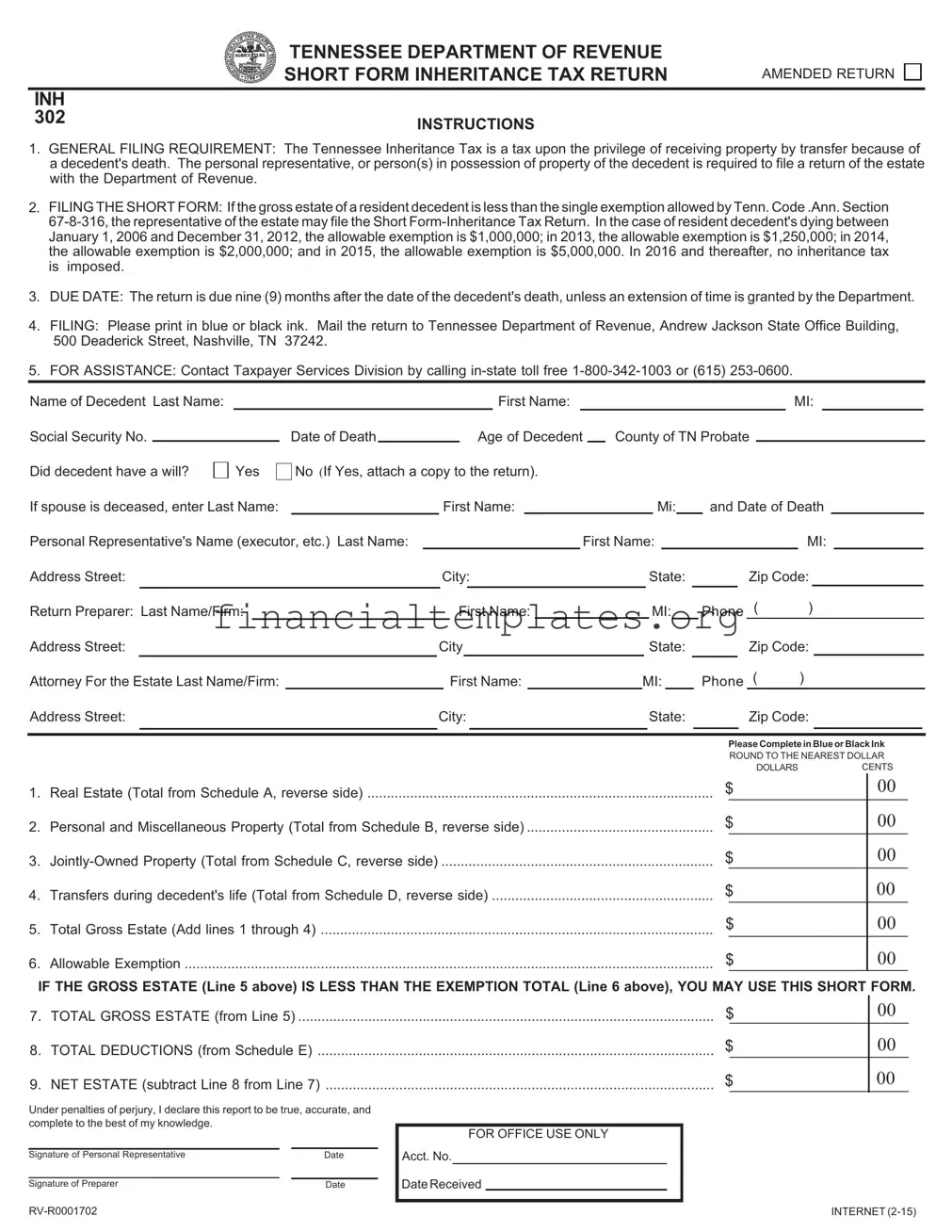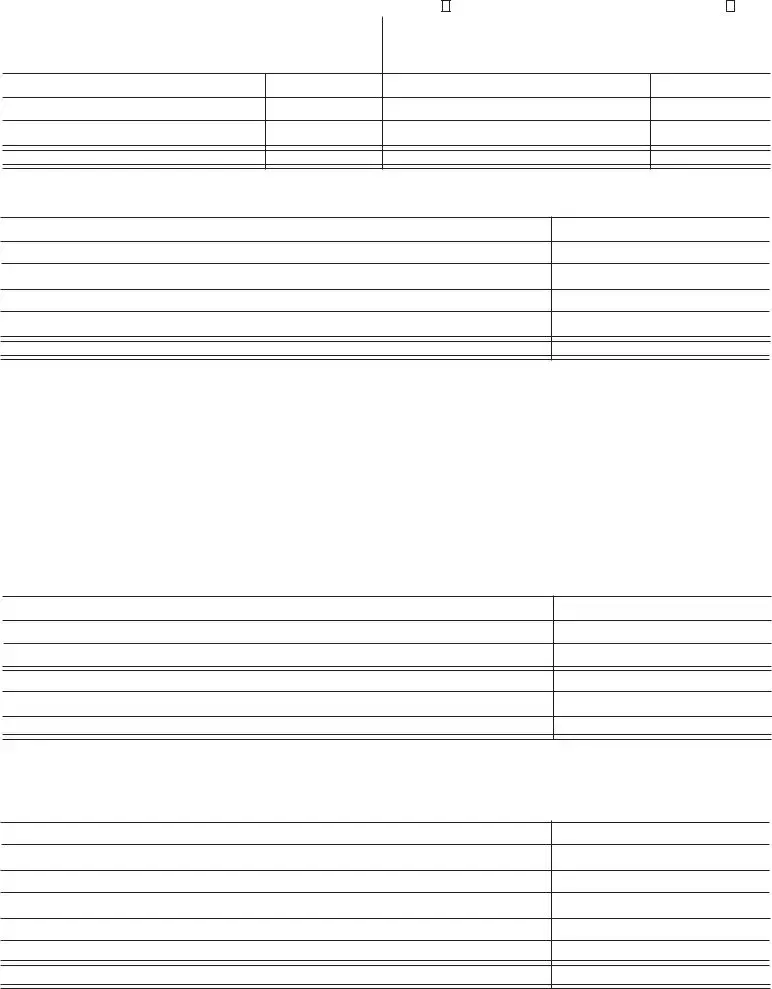Similar to the Inheritance Tax Form, an Estate Tax Return documents the valuation of a deceased individual’s estate to determine any taxes due. The process involves listing all assets, including real estate, personal property, and investments, just like the Inventory section of the Inheritance Tax Form. Both require comprehensive information to accurately assess the financial responsibilities of the estate to the federal or state government, taking into account allowable exemptions and deductions.
The Gift Tax Return is another document that echoes the structure and purpose of the Inheritance Tax Form. This form is used to report the transfer of property or money to another person without receiving full value in return. Similar to the Inheritance Tax Form, it includes valuing assets and calculating exemptions to determine if a tax liability exists. The Gift Tax Return specifically focuses on transfers made during a person’s life, akin to the "Transfers during decedent's life" section on the Inheritance Tax Form.
The Trust Income Tax Return requires trustees to report income, deductions, and credits of a trust. This parallels the Inheritance Tax Form's approach in documenting assets and deductions but within the context of a trust's operations. Like the Inheritance Tax Form, it determines the taxable portion of an entity's income after deductions, noting exemptions and taxable distributions.
The Final Individual Income Tax Return for deceased persons, or Form 1040, shares common principles with the Inheritance Tax Form in its compilation of financial information following someone's death. This return accounts for the last year of income, deductions, and credits of the deceased, similar to the Inheritance Tax Form's accounting of the decedent's assets and deductions at the time of death.
The Personal Representative’s Deed is integral to estate administration, allowing for the transfer of real property from an estate to heirs or buyers. It relates to the Inheritance Tax Form’s need to document and value real estate within the deceased’s estate, as seen in Schedule A of the form. Both documents are pivotal in the lawful distribution and taxation of estate assets.
A Power of Attorney for Finances grants someone the authority to handle financial matters on behalf of another person. It is akin to the Inheritance Tax Form’s aspect where a personal representative or executor handles the deceased's financial responsibilities, including tax obligations. The document facilitates transactions and decisions, mirroring the executor’s role in managing estate tax filings.
The Executor’s/ Administrator's Deed functions similarly to the Personal Representative’s Deed by facilitating the transfer of estate property. It directly correlates with documenting and valuing estate assets on the Inheritance Tax Form, especially in cases where property must be sold to meet financial obligations of the estate, including tax liabilities.
Lastly, the Application for Probate and Administration is akin to the initiation phase represented by filing the Inheritance Tax Form. This application begins the legal process of estate administration, identifying assets, liabilities, and the decedent’s wishes as outlined in their will, paralleled by the tax form’s role in assessing the estate’s tax responsibilities based on its value.


